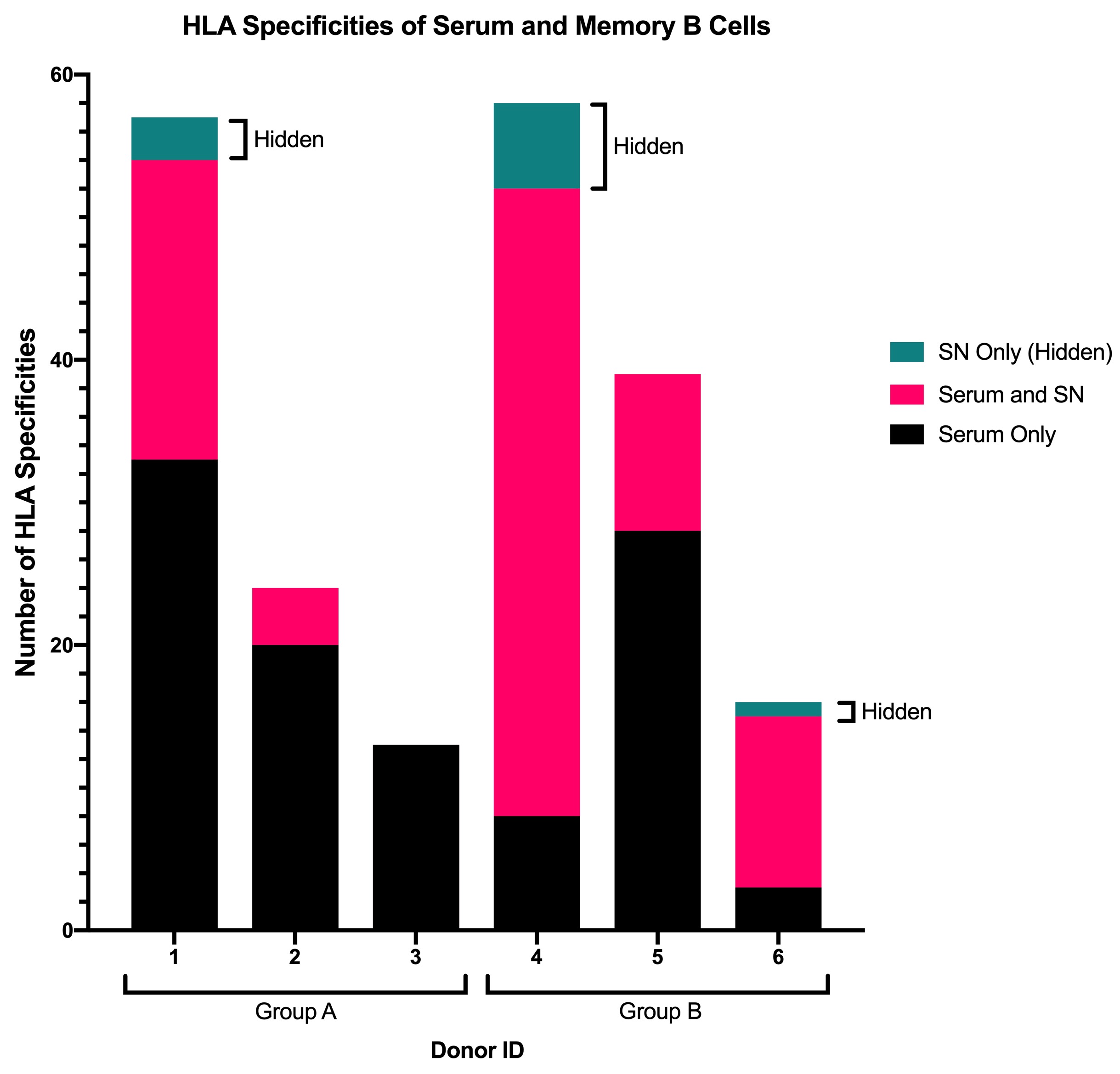Quantifying Hidden Sensitization: HLA-reactive Memory B Cells in the Spleens of Sensitized Women
1Department of Surgery, University of Alabama at Birmingham School of Medicine, Birmingham, AL, 2Department of Medicine, University of Alabama at Birmingham School of Medicine, Birmingham, AL, 3Department of Microbiology, University of Alabama at Birmingham School of Medicine, Birmingham, AL
Meeting: 2021 American Transplant Congress
Abstract number: 520
Keywords: Alloantibodies, B cells, Sensitization
Session Information
Session Name: B-cell / Antibody /Autoimmunity
Session Type: Poster Abstract
Session Date & Time: None. Available on demand.
Location: Virtual
*Purpose: Measurement of circulating anti-HLA antibody (anti-HLA-Ab) in transplant candidates and recipients is required for successful organ transplantation. However, serum Ab measurement alone likely underestimates the full spectrum of HLA reactivity in sensitized individuals, as memory B cells (Bmems) which target HLA specificities distinct from anti-HLA-Abs may also be generated during a sensitization event. While this “hidden” sensitization (HS) may predispose patients to an early anamnestic response posttransplant, the prevalence of HS is unknown as studies of HLA-reactive Bmems have relied on peripheral blood samples with a limited number of HLA-reactive Bmems. We aimed to improve our understanding of the prevalence and specificity of HS by analyzing Bmems in human spleens.
*Methods: IgG+ Bmems were purified from the spleens of six sensitized female organ donors. Cells, which were activated with IL-2, IL-21, and R848, secreted Abs into the supernatants (SNs) that reflected the Bmem specificities. Serum and SN anti-HLA-Abs were identified using a Luminex assay. The number of HLA specificities was compared between serum and SN for each donor. HLA specificities present only in SNs were classified as “hidden” (teal bars in Fig. 1).
*Results: HS was detected in three of six females, and detection markedly improved in samples with greater than 500,000 Bmems (Fig. 1, Group B). Among samples with fewer than 500,000 activated Bmems (Group A), SNs contained an average of 19% of the serum specificities (0%, 17%, and 39% for the three donors respectively), while samples with greater than 500,000 activated Bmems (Group B) produced antibodies that contained an average of 64% of the serum specificities (44%, 80%, and 85% for the three donors respectively). HS was detected in two of three donors in Group B.
*Conclusions: Using serum anti-HLA-Abs alone underestimates the breadth of sensitization. By analyzing the spleen, we were able to increase the number of Bmems sampled by over 100-fold relative to peripheral blood-based studies. Compared to those studies, we detected a higher percentage of serum specificities contained in SNs. HS was also detected more frequently. This approach may improve the sensitivity for detecting HLA-reactive Bmems and for developing a more comprehensive picture of HLA-reactive B cell memory.
To cite this abstract in AMA style:
Killian JT, Houp JA, Nellore A, King RG, Porrett PM, Lund FE. Quantifying Hidden Sensitization: HLA-reactive Memory B Cells in the Spleens of Sensitized Women [abstract]. Am J Transplant. 2021; 21 (suppl 3). https://atcmeetingabstracts.com/abstract/quantifying-hidden-sensitization-hla-reactive-memory-b-cells-in-the-spleens-of-sensitized-women/. Accessed December 24, 2025.« Back to 2021 American Transplant Congress

